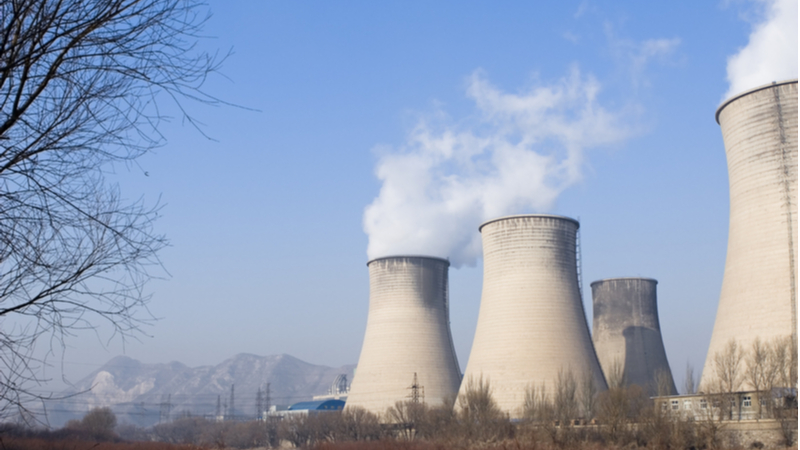The emissions impact of Australia-PRC trade
August 11 2020

This factsheet undertakes an examination of the emissions impact of Australia’s trade with the People’s Republic of China (PRC). Trade has the potential to reduce emissions if domestic products are substituted by imported products that have lower ‘embodied emissions’, that is, greenhouse gases (GHGs) released throughout the product’s supply-chain. [1]
1. Australia and the PRC have distinct economic and resource profiles, resulting in a more complementary trade relationship than between other countries. [2] Australia’s exports to the PRC concentrate on agriculture, mining and metals while the PRC’s exports to Australia concentrate on textile, chemicals and ‘machinery and equipment’. [3]
2. This complementarity can support emissions reductions. For example, the PRC’s iron ore is less readily accessible and of lower quality than Australia’s. Consequently, iron ore mining in the PRC uses more energy and produces greater emissions than in Australia – meaning the PRC’s emissions can be reduced by importing iron ore from Australia rather than mining its own.
3. Total embodied CO2 emissions in the trade between Australia and the PRC increased from nine million metric tons (Mt) in 1990 to a peak of 49 Mt in 2011, and continuously decreased to 42 Mt in 2015. [4] For context, the total value of two-way trade has increased from $1.6 billion to $86.7 billion between 1990 and 2015. [5]
4. Embodied CO2 emissions of exports from the PRC to Australia account for 64.3–67.1 percent of total embodied CO2 emissions in bilateral trade for the period 2010–2015, [6] peaking at 33 Mt in 2011. CO2 emissions embodied in Australia's exports to the PRC have been increasing and peaked in 2011 at a value of 16.1 Mt. The PRC’s exports to Australia have more embodied emissions than Australia’s exports to the PRC because the PRC’s exports – led by manufacturing – are more energy intensive than its imports from Australia which are led by much less energy-intensive.
5. Several studies have demonstrated that due to their respective economic and resource profiles, Australia-PRC trade contributes significantly to global CO2 emissions reduction. [7] By contrast, many of the PRC’s other bilateral trade relationships, such as with the US and UK, exhibit less complementarity and increase global CO2 emissions substantially. [8]
6. Australia-PRC trade has helped global climate efforts by reducing contributions to global CO2 emissions by 282.0 Mt during 1990–2015. [9]
7. Australia has shifted 284.8 Mt of emissions to the PRC through its trade from 1990 to 2015. This is equivalent to approximately 70 percent of Australia’s total emissions in 2017. [10]
8. In Australia and the PRC, the sector that produced the most embodied CO2 emissions are electricity suppliers due to the coal-dominated energy mix in both countries. [11]
9. Trade can result in the transfer of technologies with greater energy efficiency, leading to lower embodied emissions in production. These transfers could enable a further 55.5 percent reduction in the embodied CO2 emissions of the PRC’s exports to Australia in 2020 and a 1.3 percent such reduction in Australia’s exports to the PRC, suggesting the PRC will benefit more from such technology transfers. [12]
This fact sheet was prepared by Xunpeng Shi, Principal Research Fellow, Australia-China Relations Institute, University of Technology Sydney.
Sources
[1] Circular Ecology, ‘Embodied carbon assessment’, May 13 2020 <https://circularecology.com/embodied-carbon.html>.
[2] Hao Tan, Aijun Sun, Henry Lau, ‘CO2 embodiment in China–Australia trade: the drivers and implications’, Energy Policy, 61, July 18 2013 <https://www.sciencedirect.com/science/article/pii/S0301421513005338>.
[3] Song Wang, Yuhuan Zhao, Thomas Wiedmann, ‘Carbon emissions embodied in China–Australia trade: a scenario analysis based on input–output analysis and panel regression models’, Journal of Cleaner Production, 220, February 8 2019 <http://doi.org/10.1016/j.jclepro.2019.02.071>.
[4] Rui Huang, Guangwu Chen, Guonian Lv, Arunima Malik, Xunpeng Shi, Xiaotian Xie, ‘The effect of technology spillover on CO2 emissions embodied in China-Australia trade’, Energy Policy, 144, Jun 10 2020 <10.1016/j.enpol.2020.111544>.
[5] Australian Government Department of Foreign Affairs and Trade, ‘Trade time series data’, March 2020 <https://www.dfat.gov.au/trade/resources/trade-statistics/Pages/trade-time-series-data>.
[6] Rui Huang, Guangwu Chen, Guonian Lv, Arunima Malik, Xunpeng Shi, Xiaotian Xie, ‘The effect of technology spillover on CO2 emissions embodied in China-Australia trade’, Energy Policy, 144, Jun 10 2020 <10.1016/j.enpol.2020.111544>.
[7] See, e.g., Hao Tan, Aijun Sun, Henry Lau, ‘CO2 embodiment in China–Australia trade: the drivers and implications’, Energy Policy, 61, July 18 2013 <https://www.sciencedirect.com/science/article/pii/S0301421513005338>; Kankesu Jayanthakumaran, Ying Liu, ‘Bi-lateral CO 2 emissions embodied in Australia–China trade’, Energy Policy, 92, March 23 2016 <https://www.sciencedirect.com/science/article/pii/S0301421516300520>; Rui Huang, Guangwu Chen, Guonian Lv, Arunima Malik, Xunpeng Shi, Xiaotian Xie, ‘The effect of technology spillover on CO2 emissions embodied in China-Australia trade’, Energy Policy, 144, Jun 10 2020 <10.1016/j.enpol.2020.111544>.
[8] See, e.g., US: Jie Guo, Le-Le Zou, Yi-Ming Wei, ‘Impact of inter-sectoral trade on national and global CO2 emissions: an empirical analysis of China and US’, Energy Policy, 38, December 2 2009 <https://www.sciencedirect.com/science/article/pii/S0301421509008507>; UK: You Li, Nick Hewitt, ‘The effect of trade between China and the UK on national and global carbon dioxide emissions’, Energy Policy, 36, March 28 2008 <https://www.sciencedirect.com/science/article/pii/S0301421508000694>.
[9] Rui Huang, Guangwu Chen, Guonian Lv, Arunima Malik, Xunpeng Shi, Xiaotian Xie, ‘The effect of technology spillover on CO2 emissions embodied in China-Australia trade’, Energy Policy, 144, Jun 10 2020 <10.1016/j.enpol.2020.111544>.
[10] Ibid.
[11] Ibid.
[12] Ibid.

